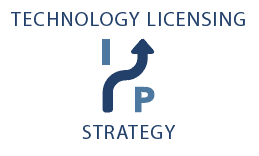
Many intellectual property licensing arrangements generate less than expected returns for the licensee, the licensor, or both. Technology licensing involves a separation of the responsibilities and activities required to bring new products to market. However, We have encountered many instances where one party to a license fails to meet the development, marketing or financial commitments promised in the agreement.
Using our experience analyzing transaction opportunities, combined with career experience in corporate banking and lending; Nevium’s professionals can provide a pre-transaction assessment of your counter-party’s ability to meet their licensing and financial commitments. This additional knowledge builds a better understanding of transaction risks and allows parties to mitigate those risks before the deal is signed.
Over the past several years, Nevium has been retained by patent owners and technology developers who are not experienced with licensing and want to do research and analysis to determine if their IP is fit and ready to license. We have also been retained by licensees seeking to manage their IP portfolios and evaluate the performance of existing licenses. Some technologies are readily licensable while some IP owners may reap better financial rewards by developing and marketing products without a licensing partner.
Nevium’s IP and Technology Licensing Services:
- Analyze your IP portfolio and identify best-fit product categories;
- Analyze product categories and identify best-fit products and licensees;
- Analyze advantages and disadvantage of licensing relative to IP monetization or a do-it-yourself strategy;
- Review existing markets for comparable products selling in the identified product categories;
- Determine the size of a market opportunity for the identified products and analyze the demographic spending patterns;
- Identify the retail channels best suited for the licensed products;
- Identify the appropriate royalty rates and licensing structure;
- Build comparable case studies to determine what drove successes and failures for similar technologies and products;
- Review patent and IP portfolios to identify gaps and strategy alternatives;
- Perform price premium analyses, price comparison studies and optimal pricing analyses; and
- Develop financial forecasts for license opportunities with different market growth and market share scenarios to calculate the value of forecast cash flows for each scenario.